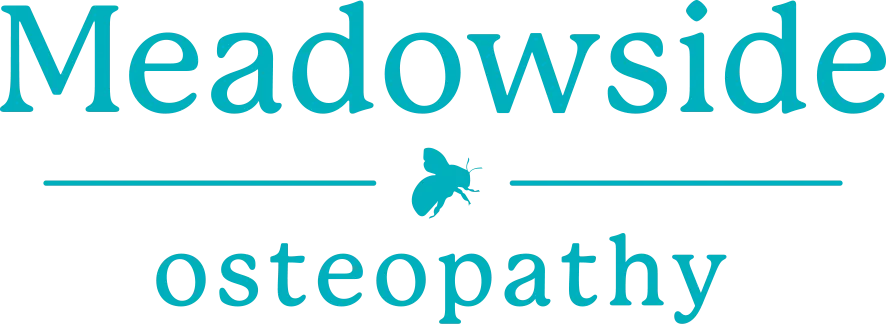At Meadowside Osteopathy, we take pride in offering state-of-the-art extracorporeal shockwave therapy (ESWT) with the industry-leading Swiss DolorClast machine. This cutting-edge technology, when integrated with osteopathic treatment, ensures optimal outcomes for our patients. Shockwave therapy is widely recognised for its efficacy in managing chronic musculoskeletal conditions, particularly those affecting the shoulder complex.
What is Shockwave Therapy?
Shockwave therapy is a non-invasive treatment that utilises high-energy acoustic waves to promote tissue regeneration, modulate pain perception, and enhance local circulation. The mechanical stimulation provided by shockwave therapy induces neovascularization, breaks down adhesions, and accelerates the body’s natural healing processes. This therapy is particularly effective for addressing chronic tendinopathies and calcific deposits in musculoskeletal structures.
How Osteopathy and Shockwave Therapy Work Together
Combining osteopathy with shockwave therapy enhances the effectiveness of both treatments by addressing the underlying causes of musculoskeletal dysfunction. While shockwave therapy stimulates tissue healing and reduces inflammation, osteopathy helps restore mobility, improve joint mechanics, and correct postural imbalances.
Osteopathy complements shockwave therapy by:
- Enhancing Shockwave Penetration – Manual therapy techniques such as soft tissue manipulation, myofascial release, and deep tissue massage help improve blood flow and tissue pliability, allowing the shockwave energy to penetrate deeper and work more effectively.
- Restoring Joint Function – Osteopathic mobilisation and articulation techniques address restrictions in the shoulder joint, improving movement and reducing compensatory strain on surrounding structures.
- Addressing Muscle Imbalances – Osteopaths assess and treat muscular dysfunctions, including overactive and underactive muscles, that may contribute to poor biomechanics and shoulder pain. Strengthening and releasing specific muscle groups help optimise movement patterns.
- Reducing Fascial Restrictions – Osteopaths work with the fascial system, ensuring that adhesions and tightness are released, allowing for better tissue mobility and reducing tension that may contribute to pain.
- Optimising Recovery – By incorporating tailored rehabilitation exercises, osteopathy supports the effects of shockwave therapy, helping to reinforce tissue healing and prevent future injuries. Exercises focusing on scapular control, shoulder stability, and rotator cuff strength play a crucial role in long-term recovery.
By combining both treatments, we provide a holistic, patient-centered approach that not only alleviates discomfort but also improves overall shoulder function, reduces the risk of re-injury, and enhances long-term musculoskeletal health.
Common Causes of Shoulder Pain
The shoulder is a highly mobile joint supported by a complex interplay of muscles, tendons, ligaments, and bursae. Dysfunction in any of these structures can result in pain and restricted movement. Some of the most common conditions affecting the shoulder that may benefit from shockwave therapy include:
- Rotator Cuff Tendinopathy – Chronic irritation and degeneration of the supraspinatus, infraspinatus, teres minor, or subscapularis tendons can lead to persistent pain and restricted function. Shockwave therapy promotes tendon healing by increasing fibroblast activity and disrupting the chronic inflammatory cycle.
- Calcific Tendinitis – The deposition of calcium hydroxyapatite within the tendons of the rotator cuff can severely limit movement and cause significant discomfort. Shockwave therapy helps to fragment and disperse these calcifications, facilitating their resorption and improving joint mobility.
- Frozen Shoulder (Adhesive Capsulitis) – This condition involves progressive stiffness and pain due to capsular thickening and fibrosis. Shockwave therapy, in conjunction with osteopathic mobilisation techniques, can enhance joint elasticity and alleviate pain by promoting blood flow to the affected tissues.
- Subacromial Impingement Syndrome – Compression of the rotator cuff tendons beneath the acromion can result in pain and restricted motion. Shockwave therapy stimulates cellular repair, increases vascularity, and reduces inflammation, aiding in tissue recovery and functional improvement.
- Shoulder Bursitis – Inflammation of the subacromial or subdeltoid bursa can cause significant discomfort. Shockwave therapy reduces bursal swelling and enhances fluid resorption, leading to pain relief and improved range of motion.
What to Expect During Your Appointment
Your initial consultation will involve a comprehensive assessment of your shoulder pain, including a detailed case history and osteopathic evaluation. We will explore contributing factors such as biomechanical imbalances, postural adaptations, and movement restrictions. Based on this assessment, we will determine whether shockwave therapy, combined with osteopathy, is appropriate for your condition.
Treatment Plan: How Many Sessions Will You Need?
Most shoulder conditions require 3 to 6 sessions of combined shockwave therapy and osteopathic treatment for optimal results. The benefits of shockwave therapy continue to be felt for up to 12 weeks post-treatment as the healing response progresses.
Is Shockwave Therapy Uncomfortable?
Shockwave therapy is generally well tolerated, but some discomfort may be experienced during treatment. However, the intensity can be adjusted to suit your comfort level. The Swiss DolorClast machine features an analgesic setting and various applicators to enhance patient comfort while ensuring effective treatment.
Book Your Consultation Today
If you’re struggling with persistent shoulder pain, shockwave therapy in combination with osteopathy may be the solution you need. Book today with our sports osteopath Ashley at Meadowside Osteopathy to schedule your assessment and start your journey toward improved mobility and pain relief.
Written by Ashley Gorton

